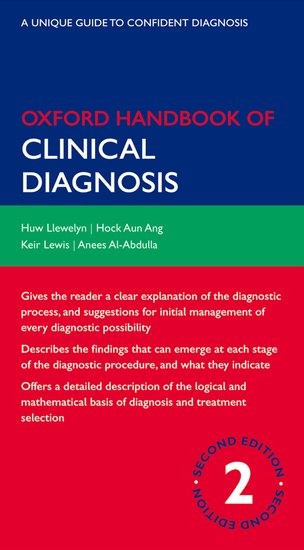By Huw Llewelyn
In medicine, we use two different thought processes: (1) non-transparent thought, e.g. slick, subjective decisions and (2) transparent reasoning, e.g. verbal explanations to patients, discussions during meetings, ward rounds, and letter-writing. In practice, we use one approach as a check for the other. Animals presumably use only non-transparent thought, but the human gift of language allows us also to convey our thoughts to others transparently. However, in order to communicate properly we must have an appropriate vocabulary linked to shared concepts.
‘Reasoning by probable elimination’ plays an important role in transparent medical reasoning. The diagnostic process uses ‘probable elimination’ of rival possibilities and arrives at a conclusion through that process of elimination. Suppose one item of information (e.g. a symptom) is chosen as a ‘lead’ that is associated with a short list of diagnoses that covers most people with that lead (ideally 100%). The next step is to choose a diagnosis from that list and to look for a finding that occurs commonly in those with that chosen diagnosis and rarely (ideally never) in at least one other diagnosis in the list. If such a finding is found for each of the other diagnoses in the list, then the probability of the chosen diagnosis is high. If findings are found that never occur in each other possibility in the list, then the diagnosis is certain. However, if none of this happens, then another diagnosis is chosen from the list and the process is repeated.
Probabilistic reasoning by elimination explains how diagnostic tests can be assessed in a logical way using these concepts to avoid misdiagnosis and mistreatment. If clear, written explanations became routine, it would go a long way to eliminating failures of care that have dominated the media of late.

Reasoning by probable elimination is important in estimating the probability of similar outcomes by repeating a published study (i.e. the probability of replication). In order for the probability of replication to be high, the probability of non-replication due to all other reasons has to be low. For example, the estimated probability of non-replication due to poor reporting of results or methods (due to error, ignorance or dishonesty) has to be low. Also, the probability of non-replication due to poor or idiosyncratic methodology, or different circumstances or subjects in the reader’s setting, etc. should be low. Finally, the probability of non-replication by chance due to the number of readings made must be low. If, after all this, the estimated probabilities are low for all possible reasons of non-replication, then the probability of replication should be high. This assumes of course that all the reasons for non-replication have been considered and shown to be improbable!
If the probability of replicating a study result is high, the reader will consider the possible explanations or hypotheses for that study finding. Ideally the list of possibilities should be complete. However, in a novel scientific situation there may well be some explanations that no one has considered yet. This contrasts with a diagnostic situation where past experience tells us that 99% of patients presenting with some symptom have one of short list of diagnoses. Therefore, the probability of the favoured scientific hypothesis cannot be assumed to be high or ‘confirmed’ because it cannot be guaranteed that all other important explanations have been eliminated or shown to be improbable. This partly explains why Karl Popper asserted that hypotheses can never be confirmed – that it is only possible to ‘falsify’ alternative hypotheses. The theorem of probable elimination identifies the assumptions, limitations and pitfalls of reasoning by probable elimination.
Reasoning by probable elimination is central to medicine, science, statistics and other disciplines. This important method should have a central place in education.
Huw Llewelyn is a general physician with a special interest in endocrinology and acute medicine, who has had a career-long interest in the mathematical representation of the thought processes used by doctors in their day to day work during clinical practice, teaching and research. He has also been an honorary fellow in mathematics in Aberystwyth University for many years and has had wide experience in different medical settings: general practice, teaching hospital departments with international reputations of excellence and district general hospitals in urban and rural areas. His insight is reflected in the content of the Oxford Handbook of Clinical Diagnosis and the mathematical models in the form of new theorems on which that content is based.
Subscribe to the OUPblog via email or RSS.
Subscribe to only health and medicine articles on the OUPblog via email or RSS.
Image credit: Image via iStockphoto.


I think there is a paralelism between your “Probabilistic reasoning by elimination” and the Severity Principle by Deborah Mayo:
“Data x0 do not provide good evidence for hypothesis H if x0 results from a test procedure with a very low probability or capacity of having uncovered the falsity of H, even if H is incorrect.”
Severe testing was a term first coined by Popper and extended by Mayo to frequentist statistics (error probabilities).
Thank you for that comment. I agree that what I am doing here is strongly related to Popper’s concept of ‘severe testing’ as developed by Deborah Mayo. I have approached the concepts primarily from a doctors viewpoint but drawn parallels with statistical inference and scientific hypothesis testing.
My take is that we need to base the reasoning on a theorem based on Bayes extended rule by dealing with a number of hypotheses. Ideally all but one is shown to be improbable by a strong likelihood ratio between the target hypothesis and each of its rivals. A different item of evidence may be needed to do this for each rival.
I also agree with Deborah Mayo that one prior and one likelihood ratio with Bayes simple (non-extended) rule is not enough to do this.